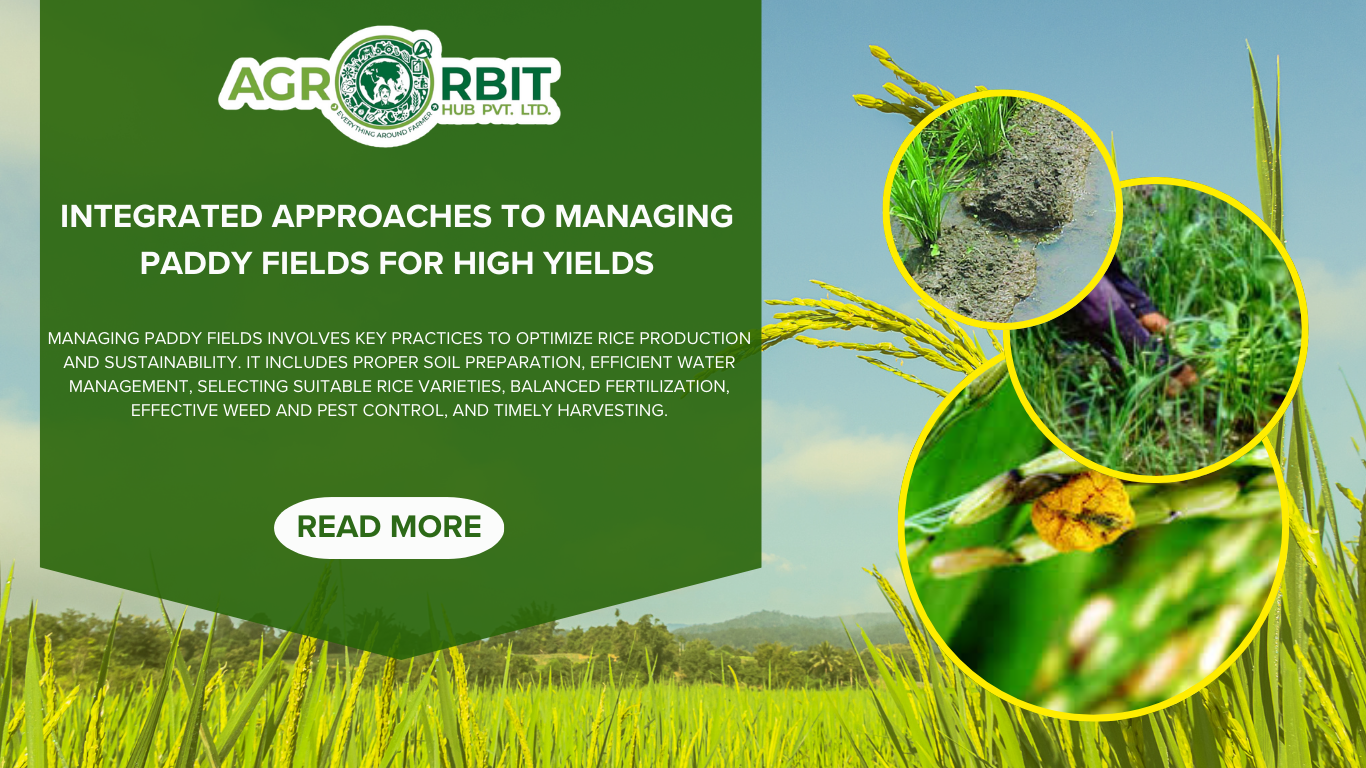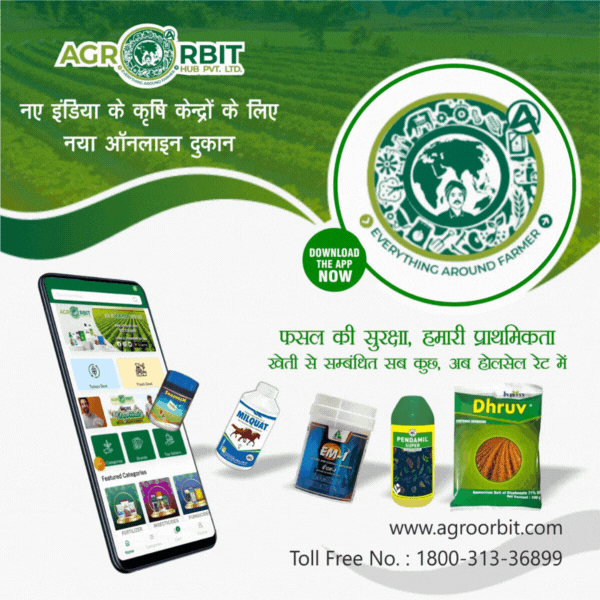

Integrated Approaches to Managing Paddy Fields for High Yields
Paddy disease refers to any
condition caused by pathogens (such as fungi, bacteria, viruses, and nematodes)
or environmental factors that negatively affect the health and productivity of
rice plants (Oryza sativa), which are typically cultivated in waterlogged
fields known as paddy fields. These diseases can lead to reduced yields, poor
grain quality, and significant economic losses if not properly managed. Below
is a detailed.
DESCRIPTION OF THE VARIOUS TYPES OF PADDY DISEASES
1. Fungal Diseases
Fungal pathogens are among the
most common causes of diseases in paddy fields, leading to various symptoms
that can severely impact rice production.
Rice Blast (Pyricularia oryzae):
Symptoms: This disease is characterized by diamond-shaped lesions on leaves,
which may also appear on the stems, nodes, and panicles. The lesions often have
a gray center and dark brown borders. In severe cases, it can cause the neck of
the panicle to rot, leading to significant grain loss.
Impact: Rice blast can lead to poor grain filling and even complete crop
failure in severe cases.
Management: Use of resistant varieties, proper field sanitation, balanced
fertilization (avoiding excessive nitrogen), and timely application of
fungicides like tricyclazole.
Sheath Blight (Rhizoctonia
solani):
Symptoms: Sheath blight presents as irregular, greenish-gray lesions on the leaf
sheaths near the waterline, which can spread upwards. Infected areas may turn
brown and die, causing lodging of the rice plants.
Impact: This disease reduces the plant's ability to photosynthesize and can
lead to yield losses, especially in dense plantings.
Management: Proper spacing of plants, use of resistant varieties, and application
of fungicides such as azoxystrobin.
Brown Spot (Bipolaris oryzae):
Symptoms: Small, round to oval brown spots appear on leaves and sometimes on
grains. The spots may have a distinct dark brown margin with a gray or light
brown center.
Impact: Brown spot primarily affects grain quality, but in severe cases, it can
lead to "rice famine" due to significant yield loss.
Management: Use of balanced fertilizers, particularly potassium and silica, and
application of appropriate fungicides.
False Smut (Ustilaginoidea
virens):
Symptoms: This disease causes the formation of greenish spore balls on the rice
panicles, which later turn yellowish or orange. The infected grains are
replaced by these smut balls, reducing yield and quality.
Impact: Reduces the market value of rice due to contamination.
Management: Use of resistant varieties, clean seed, and fungicide application at
the booting stage.
2. Bacterial Diseases
Bacterial diseases in paddy fields
can spread rapidly and are often more challenging to manage due to their
ability to thrive in warm, humid conditions.
Bacterial Leaf Blight (Xanthomonas
oryzae pv. oryzae):
Symptoms: The disease starts as water-soaked streaks on the leaf margins, which
then turn yellow and spread downwards, eventually causing the leaves to wilt
and die. Infected seedlings exhibit stunted growth.
Impact: It can cause yield losses of up to 50% or more, particularly in
susceptible varieties.
Management: Use of resistant varieties, avoidance of excessive nitrogen
fertilization, and the application of copper-based bactericides.
Bacterial Leaf Streak (Xanthomonas
oryzae pv. oryzicola):
Symptoms: Translucent streaks appear on the leaves, which later become necrotic
and brown. The streaks often merge, leading to large dead areas on the leaf.
Impact: Reduces photosynthesis, leading to lower yields.
Management: Similar to bacterial leaf blight, management includes the use of
resistant varieties and proper nutrient management.
3. Viral Diseases
Viral diseases in paddy fields are
primarily spread by insect vectors, particularly leafhoppers, and can cause
widespread damage.
Rice Tungro Disease (RTD):
Symptoms: Infected plants exhibit stunted growth, yellowing of leaves, and
reduced tillering. The leaves may also show orange or yellow mottling. Tungro
is caused by a combination of two viruses: Rice tungro bacilliform virus (RTBV)
and Rice tungro spherical virus (RTSV).
Impact: This disease can cause severe yield losses, particularly in susceptible
varieties.
Management: Control of leafhopper populations using insecticides, planting of
resistant varieties, and avoiding planting during peak leafhopper periods.
Rice Grassy Stunt Virus:
Symptoms: Plants infected with this virus appear stunted with dark green, grassy
leaves. The disease is transmitted by the brown planthopper.
Impact: Reduces both yield and grain quality.
Management: Use of resistant varieties, control of planthopper populations, and
proper water management to reduce vector habitats.
4. Nematode Diseases
Nematodes are microscopic
roundworms that attack the roots of rice plants, leading to various symptoms.
Root-Knot Nematodes (Meloidogyne
spp.):
Symptoms: Infected plants exhibit galls or knots on the roots, leading to poor
root function, stunted growth, and yellowing of leaves.
Impact: Reduces nutrient uptake and can significantly affect yield.
Management: Crop rotation, resistant varieties, and soil treatment with
nematicides.
White Tip Nematode (Aphelenchoides
besseyi):
Symptoms: This nematode causes white or yellow tips on the leaves, leading to
curling and stunted growth. It also affects grain quality, causing
discoloration and deformity.
Impact: Reduces both the yield and quality of the rice.
Management: Use of clean seeds, seed treatment with hot water or nematicides, and
rotation with non-host crops.
5. Environmental and Physiological
Disorders
Apart from biotic factors, paddy
fields can also be affected by environmental conditions or improper agronomic
practices.
Blast Disease due to Abiotic
Stress:
Symptoms: Similar to fungal blast, but triggered by environmental factors such as
nutrient imbalances, water stress, or temperature extremes.
Impact: Yield reduction due to poor plant health.
Management: Proper water management, balanced fertilization, and stress mitigation
practices.
Nutrient Deficiencies:
Symptoms: Deficiencies in nitrogen, phosphorus, potassium, or micronutrients can
cause yellowing, stunted growth, poor tillering, and reduced grain filling.
Impact: Leads to reduced yields and poor grain quality.
Management: Regular soil testing, balanced fertilization, and the use of micronutrient supplements.

Managing Paddy Fields: A Comprehensive Guide
Managing paddy fields involves a
series of critical practices aimed at optimizing the health, productivity, and
sustainability of rice crops. This process encompasses several key areas, each
crucial for achieving high yields and maintaining the ecological balance of the
fields.
1. Soil Preparation and Fertility
Land Preparation: Proper land preparation involves plowing, leveling, and puddling the
soil to create an ideal environment for rice growth. Puddling helps to create a
fine, smooth seedbed and ensures good water retention.
Soil Testing: Regular soil testing is essential to assess nutrient levels and pH.
Based on the results, appropriate fertilizers and soil amendments are applied
to maintain optimal soil fertility.
Organic Matter: Incorporating organic matter such as compost, green manure, and crop
residues improves soil structure, nutrient availability, and microbial
activity, contributing to overall soil health.
2. Water Management
Irrigation: Effective water management is critical for paddy cultivation.
Traditional methods involve continuous flooding, but techniques like Alternate
Wetting and Drying (AWD) are gaining popularity for their water-saving
benefits. AWD involves alternating periods of flooding with intermittent
drying.
Water Conservation: Implementing rainwater harvesting and efficient irrigation systems
helps in conserving water and reducing dependency on external sources. Proper
management of water levels prevents issues like waterlogging and ensures
healthy plant growth.
3. Seed Selection and Sowing
Variety Selection: Choosing the right rice variety suited to local conditions and
resistance to common pests and diseases is crucial. High-yielding,
drought-tolerant, and disease-resistant varieties can significantly enhance
productivity.
Sowing Methods: Seeds can be sown directly or transplanted as seedlings. Direct seeding
involves sowing seeds directly into the field, while transplanting involves
growing seedlings in a nursery and then planting them in the field. Each method
has its benefits depending on local practices and conditions.
4. Nutrient Management
Fertilization: A balanced fertilization regimen is key to optimal rice growth.
Fertilizers should be applied based on soil test recommendations, focusing on
major nutrients like nitrogen, phosphorus, and potassium, as well as
micronutrients.
Timing and Methods: Proper timing and application methods for fertilizers can prevent
nutrient losses and improve uptake. Split applications and using slow-release
fertilizers can enhance efficiency.
5. Weed Management
Weed Control: Weeds compete with rice plants for nutrients, water, and light.
Effective weed management involves a combination of pre-emergence herbicides,
manual weeding, and mechanical weeders.
Integrated Weed Management: Combining different methods, such as using herbicides in conjunction
with cultural practices like proper field leveling and crop rotation, helps in
managing weed populations more effectively.
6. Pest and Disease Management
Monitoring and Identification: Regular monitoring for pests and diseases is essential for early
detection and intervention. Common pests include stem borers and leafhoppers,
while diseases can range from fungal infections like rice blast to bacterial
and viral diseases.
Integrated Pest Management (IPM): IPM strategies combine biological, cultural, and chemical controls.
This includes using resistant varieties, applying biological control agents,
and judicious use of pesticides to manage pest populations while minimizing
environmental impact.
7. Harvesting and Post-Harvest
Management
Harvesting: Timing is critical for harvesting to ensure maximum yield and quality.
Harvest when grains are fully mature and the moisture content is around 20-25%.
Timely harvesting prevents losses due to shattering or diseases.
Post-Harvest Processing: Proper processing and storage are vital to maintain grain quality and
prevent losses. This includes drying, milling, and storing rice under
appropriate conditions to prevent spoilage and pest infestation.
8. Sustainability and Environmental
Considerations
Sustainable Practices: Incorporating sustainable practices such as reduced chemical use,
water-saving techniques, and promoting biodiversity can enhance long-term
productivity and reduce environmental impact.
Climate Adaptation: Adapting to climate change through practices like selecting resilient
varieties and adjusting water management strategies helps in mitigating the
effects of extreme weather conditions.
Effective management of paddy
fields requires a holistic approach that integrates these practices to achieve
optimal growth and yield. By focusing on soil health, efficient water use,
proper nutrient management, and proactive pest and disease control, farmers can
enhance productivity and ensure the sustainability of their rice cultivation
efforts.
Beyond Barriers: Easy, Effective Ways to Enhance Paddy Growth
explores innovative, user-friendly strategies to enhance the
overall health and productivity of paddy fields, moving beyond traditional
disease management. This approach emphasizes simplicity and accessibility,
offering farmers practical methods that are easy to implement yet effective in
boosting crop vitality. By focusing on soil health, water management, and
natural resilience, these alternative techniques aim to create a more
sustainable and robust rice-growing system. The concept encourages practices
like organic matter enrichment, smart irrigation, and natural pest resistance,
all designed to improve paddy health without relying solely on chemical
interventions. This holistic strategy not only protects the rice plants but
also enhances their growth and yield potential, offering a straightforward path
to healthier, more resilient paddy fields.







